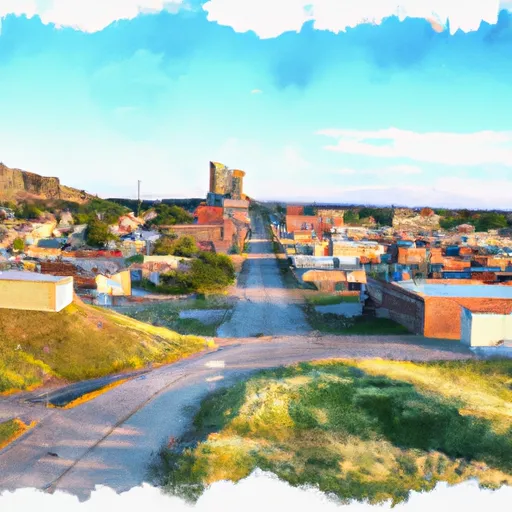-
 Snoflo Premium
Snoflo Premium
Get unlimited access to all our content
With no Ad interruptions! - Start Your Free Trial Login with existing account
Van-Tassell
Eden Index
Climate
7.3
•
Recreation
•
Community
•
Safeguard
2.9/10

Van Tassell is a small town located in northern Niobrara County, Wyoming. It experiences a semi-arid climate with four distinct seasons. Summers are warm and dry, with average temperatures ranging from the high 70s to mid-80s Fahrenheit. Winters are cold, with average temperatures in the 20s and occasional snowfall. Spring and fall bring mild temperatures and moderate precipitation.
The hydrology in Van Tassell is influenced by the nearby Hat Creek and its tributaries. These water sources provide opportunities for fishing enthusiasts, with species like trout and bass commonly found. Visitors can also enjoy boating and canoeing on Hat Creek. The region's hydrology also supports agricultural activities, with local farms utilizing irrigation systems to cultivate crops and raise livestock.
Outdoor recreation opportunities in Van Tassell are abundant. The surrounding area offers scenic hiking trails, perfect for exploring the natural beauty of Wyoming. Hunting is also popular in the region, with opportunities to pursue big game such as deer and elk. Additionally, the town hosts various community events and rodeos, showcasing the rich western culture of Wyoming. Overall, Van Tassell provides a charming rural setting with a range of outdoor activities for residents and visitors alike.
What is the Eden Index?
The Snoflo Eden Index serves as a comprehensive rating system for regions, evaluating their desirability through a holistic assessment of climate health, outdoor recreation opportunities, and natural disaster risk, acknowledging the profound impact of these factors on livability and well-being.
Climate Health Indicator (CHI): 7.3
Van-Tassell receives approximately
410mm of rain per year,
with humidity levels near 79%
and air temperatures averaging around
8°C.
Van-Tassell has a plant hardyness factor of
4, meaning
plants and agriculture in this region thrive during a short period during spring and early summer. Most
plants will die off during the colder winter months.
By considering the ideal temperature range, reliable water supplies, clean air, and stable seasonal rain or snowpacks, the Climate Health Indicator (CHI) underscores the significance of a healthy climate as the foundation for quality living.
A healthy climate is paramount for ensuring a high quality of life and livability in a region, fostering both physical well-being and environmental harmony. This can be characterized by ideal temperatures, reliable access to water supplies, clean air, and consistent seasonal rain or snowpacks.
Weather Forecast
Streamflow Conditions
Niobrara
Area Rivers
Niobrara
Snowpack Depths
Niobrara
Reservoir Storage Capacity
Niobrara
Groundwater Levels
Recreational Opportunity Index (ROI):
The Recreational Opportunity Index (ROI) recognizes the value of outdoor recreational options, such as parks, hiking trails, camping sites, and fishing spots, while acknowledging that climate plays a pivotal role in ensuring the comfort and consistency of these experiences.
Access to outdoor recreational opportunities, encompassing activities such as parks, hiking, camping, and fishing, is crucial for overall well-being, and the climate plays a pivotal role in enabling and enhancing these experiences, ensuring that individuals can engage in nature-based activities comfortably and consistently.
Catastrophe Safeguard Index (CSI):
The Catastrophe Safeguard Index (CSI) recognizes that natural disaster risk, encompassing floods, fires, hurricanes, and tornadoes, can drastically affect safety and the overall appeal of an area.
The level of natural disaster risk in a region significantly affects safety and the overall livability, with climate change amplifying these risks by potentially increasing the frequency and intensity of events like floods, fires, hurricanes, and tornadoes, thereby posing substantial challenges to community resilience and well-being.
Community Resilience Indicator (CRI):
The Community Resilience Indicator (CRI) recognizes that education, healthcare, and socioeconomics are crucial to the well-being of a region. The CRI acknowledges the profound impact of these elements on residents' overall quality of life. By evaluating educational resources, healthcare accessibility, and economic inclusivity, the index captures the essential aspects that contribute to a thriving community, fostering resident satisfaction, equity, and social cohesion.

